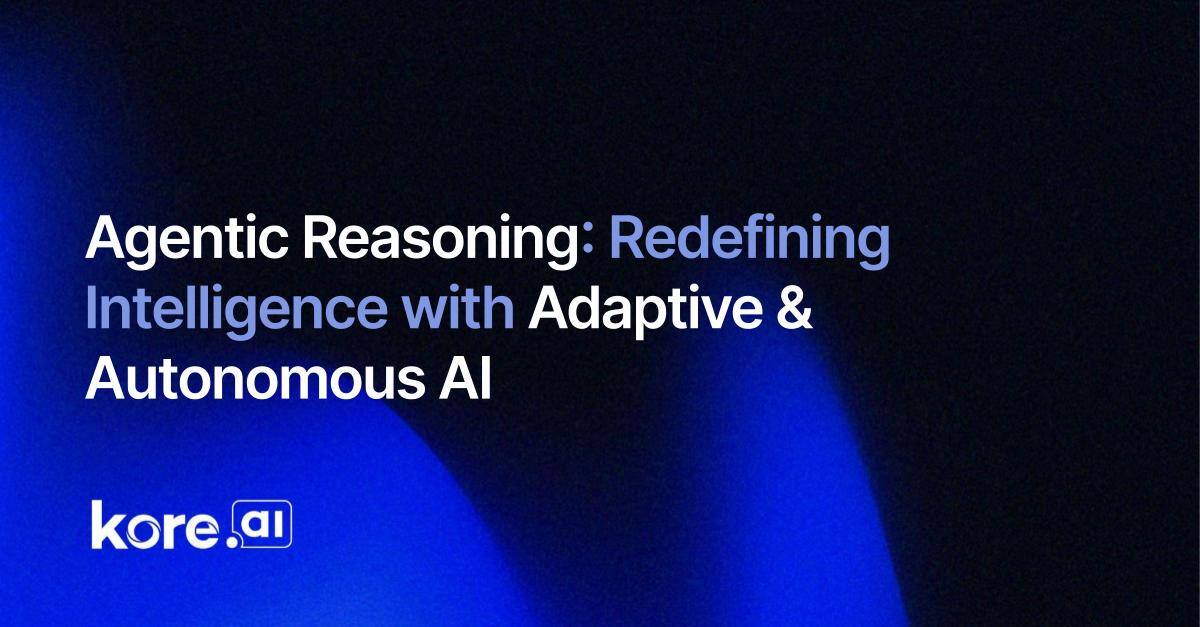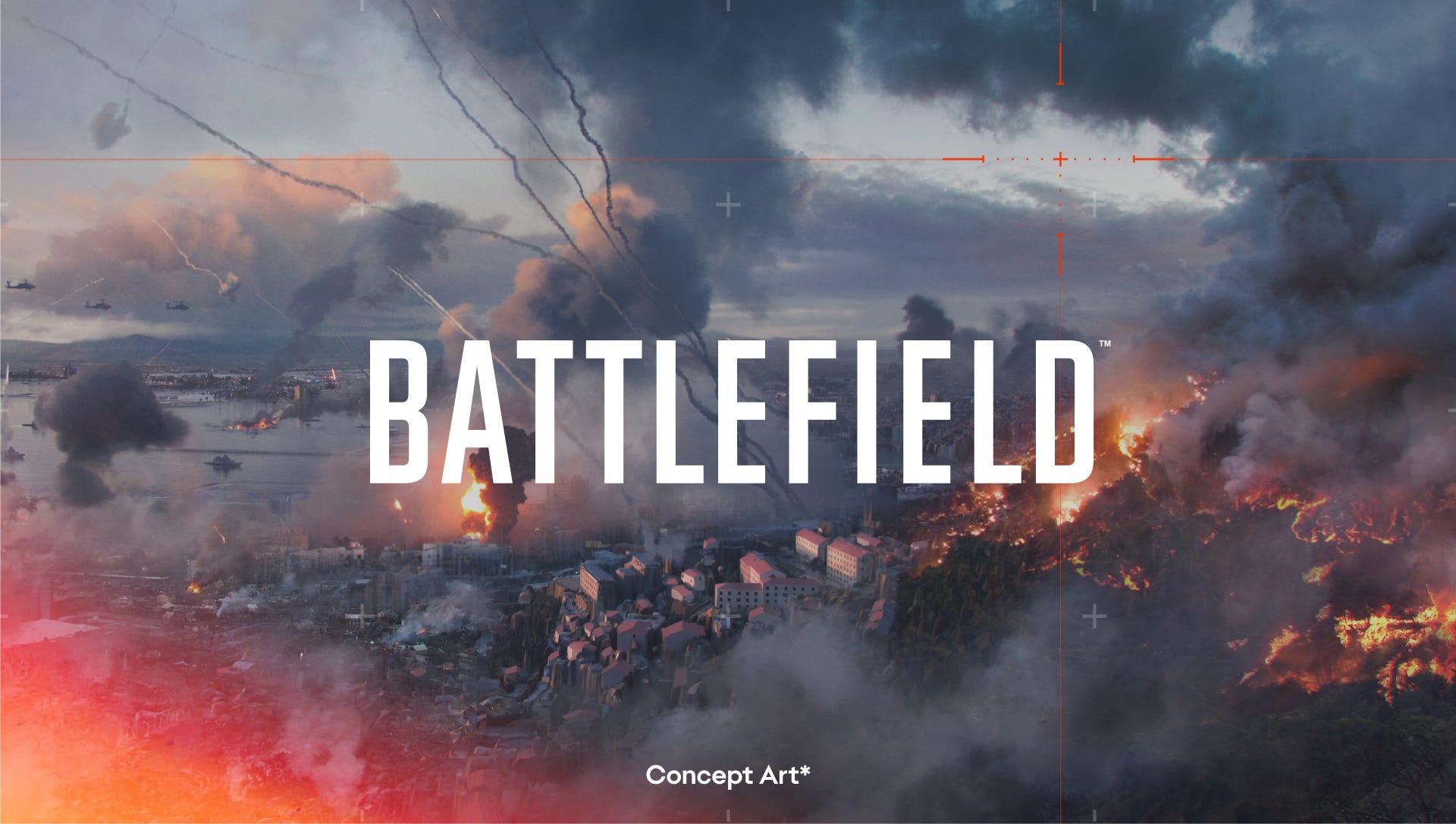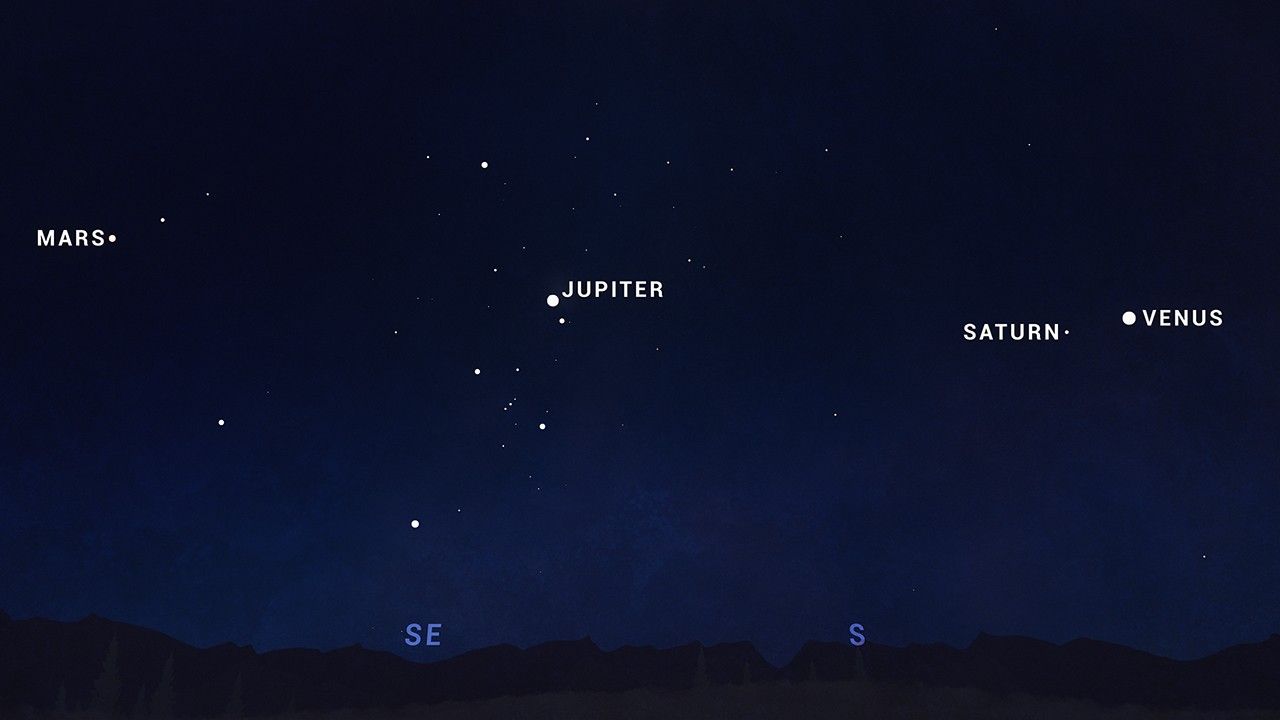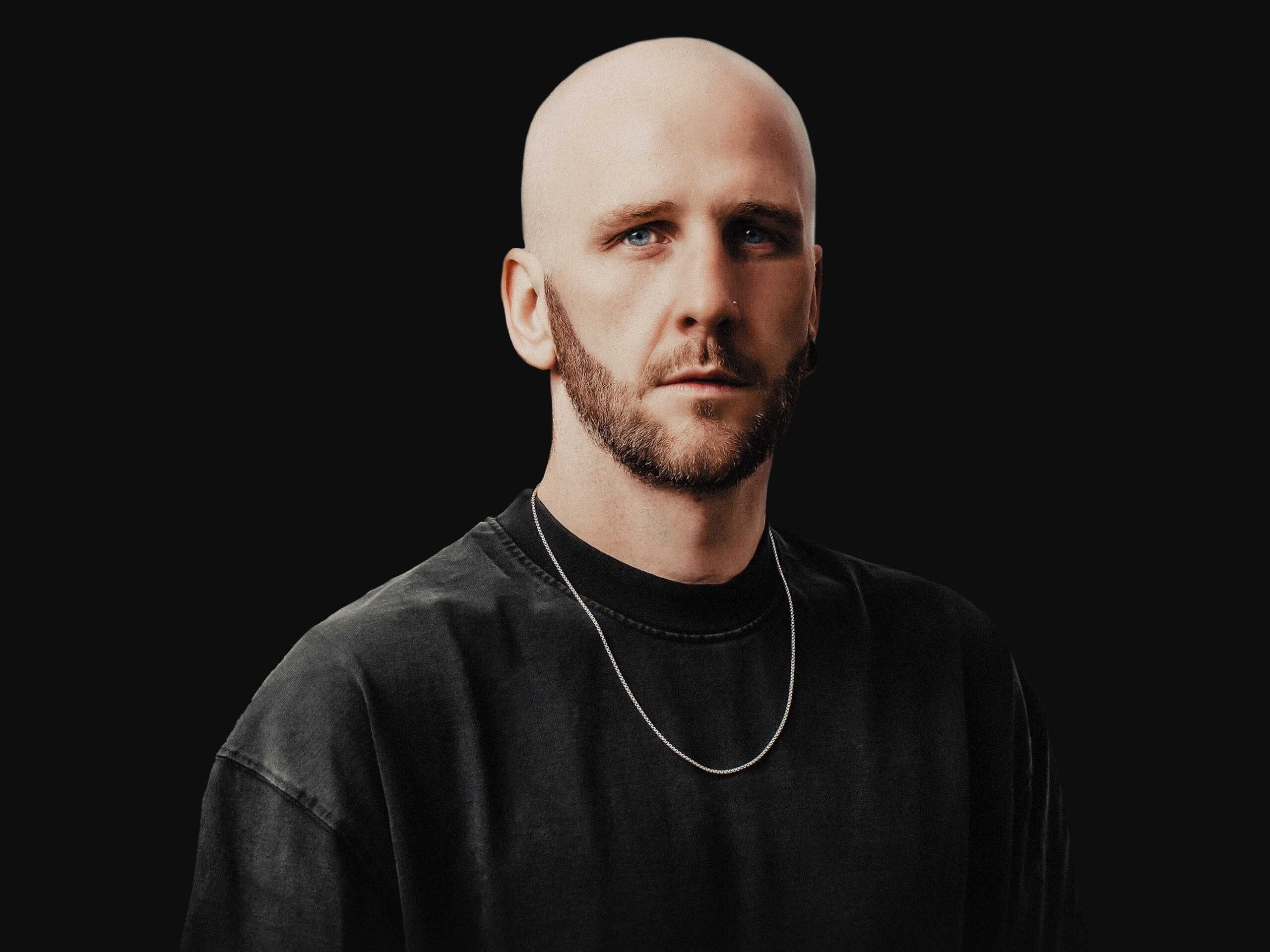Scriptnotes, Episode 673: Structure, and How to Enjoy a Movie, Transcript
The original post for this episode can be found here. John August: Hello and welcome. My name is John August. Craig Mazin: My name is Craig Mazin. John: You’re listening to episode 673 of Scriptnotes, a podcast about screenwriting and things that are interesting to screenwriters. Today on the show, let’s get back to basics. […] The post Scriptnotes, Episode 673: Structure, and How to Enjoy a Movie, Transcript first appeared on John August.

The original post for this episode can be found here.
John August: Hello and welcome. My name is John August.
Craig Mazin: My name is Craig Mazin.
John: You’re listening to episode 673 of Scriptnotes, a podcast about screenwriting and things that are interesting to screenwriters.
Today on the show, let’s get back to basics. Structure, Craig. What is it? Why do writers keep freaking out about it when it’s a fundamental part of storytelling going all the way back to caveman days?
Craig: I think why do writers keep freaking out about it is a perfectly good place where we should start once we get there.
John: Then how do you enjoy a movie? We’ll teach you how not to be so meh about the things you’re watching.
Craig: [chuckles] Be born before 2000.
John: Plus, we’ll answer some listener questions because it’s been a minute. In our bonus segment for premium members, let’s talk about the wearables, the devices we wear to track what’s happening in our bodies.
Craig: Fantastic. Let’s do it.
John: First, some news. We had Oscar nominations this morning as we’re recording. We’re recording this on Thursday.
Craig: Yes.
John: As always, I’m so happy for the people who got nominated. I am bummed for the people who didn’t. And it’s all going to be okay.
Craig: Everything will be absolutely okay. Even being considered for something like that is extraordinary. I assume everybody going into that has grown up enough to know that sometimes weird stuff happens. Somehow Conclave got nominated for best picture and best actor, but not best director.
John: Yes, there’s a couple of those.
Craig: Wasn’t quite sure about that one.
John: Wicked also.
Craig: Wicked, best picture but not best screenplay?
John: Yes.
Craig: All right. Not fair to our friend, Dana Fox. There are these strange things that happen but it’s all priced in. At the end of the day, while it is nice to have a trophy, this is all part of advertising. For those folks who did get nominations, I think it’s really exciting that their movies will get more marketing money so more people can see them, particularly for the little ones.
John: But also congratulations, now you get to do six more weeks of work promoting this thing.
Craig: It is a full-time job.
John: You don’t get paid for it.
Craig: No.
John: Drew, tell us about Weekend Read because I think you have all of these scripts in Weekend Read right now.
Drew Marquardt: Every single nominated screenplay we’ve got up from Weekend Read. Should I run down the list?
John: Go for it.
Craig: Yes, please.
Drew: We have A Complete Unknown, A Real Pain, Anora, Conclave, Emilia Perez, Nickel Boys, which is a really fun read, September 5, Sing Sing, The Brutalist, and The Substance. They’re all in the “And the nominees are…” category and you can read them there.
Craig: That’s great. It used to be five things, right?
John: Yes. Now that we have both adapted and original screenplay.
Craig: Oh, I see. There are 10 best.
John: Yes.
Craig: I’m in the Academy. I should know this, right? I vote very quickly. I shouldn’t say that. I vote studiously.
John: I do too.
Craig: But I clearly don’t pay attention to how many people are in the category and I’m voting. There are 10 best pictures, but then everybody else is five. Is that right?
John: That’s correct. Every other category is five. Drew has gone through each of these scripts to make sure they actually work properly in Weekend Read. So I would just say, rather than doomscrolling on your phone, why don’t you scroll through a script and actually read something and read something good?
Craig: Anything is better than doomscrolling, anything.
John: Now, Craig, I know you took a mandate to consume less news and you’re off all the social media. How is that going for you?
Craig: Amazingly well.
John: That’s good.
Craig: I am aware of what is going on in the world. I get my news through the old-fashioned method, which is to pick a couple of periodicals that I find at least thoughtful and look at their curated reportage of what happened the day before. Not what happened 10 minutes ago and with some breath so that there can be some thoughtful analysis and context. That’s it. I do not get my news from the fire hose of insanity and I don’t watch anything with anyone talking. That’s the key. [chuckles] I do not watch talking heads. I do not look at tweets. I do not look at Instathoughts and it is spectacular.
John: During the height of the fires, I was reminded of how useful it is to have local news. It was one of those rare situations where I turned on the TV and actually watched local news as fires were happening. It was useful to see like, “Oh, my gosh, the fires are getting close here. We actually need to start packing up.” I was so grateful to have that as a service, but I do not want that in my veins all the time. I grew up in a household where the TV news was on at least four hours a day, local news and national news. It’s not helpful.
Craig: Local news, in particular, and this is no slight against them, the work that they do when something like the fires happen is extraordinary and people put their lives at risk and they’re flying around the helicopters. But for the most part, they don’t have either enough things to report that they think anyone will watch or they only have lurid things that aren’t worth reporting that they know people will watch. You get a lot of, there was an accident here and there was a shooting and there was a stabbing.
What you don’t get are, say, this bill was deliberated. All the sudden frenzy over why were tanks empty? What was going on with the firefighters? Why didn’t the pumps work? That’s been being discussed for years and the local news reported on 0% of it. It’s not a great thing to have on all day unless there’s something serious happening.
John: Indeed.
Craig: Like a car chase.
John: Like a car chase, yes.
Craig: Yes.
Craig: All right, let’s do some follow-up because it’s been a while since you and I’ve been here in person to do some follow-up on previous episodes. Drew, take us back to 671. We had a How to view a Movie about an IVF mix-up.
Drew: Several people wrote in that there were already movies out there with a similar premise. Almodovar’s Parallel Mothers. There’s a Danish movie called Maybe Baby. There’s an Indian comedy called Good News and a Mexican sitcom called Daughter from Another Mother.
Craig: Looks like they’ve covered this one, John.
John: They have covered it. Internationally it’s been well covered.
Craig: Everyone all across the world enjoys this story.
John: Also, we talked in that same episode about a Unabomber movie and several people wrote in to say there’s a series called Manhunt about Ted Kaczynski starring Paul Bettany and Sam Worthington.
Craig: Okay.
John: Sure.
Craig: Done.
John: Done.
Drew: We’ll put links in the show notes for all those.
Craig: Fantastic.
John: We also had some follow-up on way back to episode 454. We were talking about erotic fiction.
Craig: That was a long time ago.
John: Yes.
Drew: Jenny in New York City writes, I was listening to that bonus segment of episode 454 where you and Craig discuss but disappointingly do not read erotic fiction. In it, you bring up Fifty Shades of Grey as the prime example of fan fiction that managed to cross over into popular culture. Craig says that Fifty Shades of Grey seemed like it was heralding the beginning of something and that he’s surprised that nothing similar followed it. Four-plus years later, we’re seeing the floodgates open. There’s a through line from fan fiction to TikTok or BookTok to the traditional book publishing industry.
A well-known example is The Love Hypothesis, which was originally a Rey and Kylo Ren, or Reylo, fan fiction published online in 2018 and then scrubbed of all the Star Wars references and traditionally published in 2021. A film adaptation is now in development. There are also three Draco and Hermione, or Dramione, fan fictions all slated for major publication in 2025.
Craig: Okay. Wait, but also scrubbed of any–
John: Yes. That’s the thing. Fifty Shades of Grey, of course, was fan fiction that was scrubbed.
Craig: Scrubbed from Twilight.
John: Yes.
Craig: Right.
John: We were correct but just ahead of the curve.
Craig: We were ahead of the curve.
John: Now, BookTok caught up with what we predicted four years ago.
Craig: Yay, erotic fiction.
John: Yes.
Craig: Is there anything less sexy than the phrase erotic fiction?
John: Yes, it’s a —
Craig: Boner killer.
John: It’s not so good.
Craig: No.
John: I’m going to be optimistic. I’m going to be positive. This is a movie that we didn’t have in theaters before. The same thing with Fifty Shades of Grey. We weren’t having sexual thrillers on the big screen and hooray.
Craig: Not since the ‘90s.
John: Yes.
Craig: There has been a lot of discussion about millennials and Gen Z’s general lack of interest in seeing sex portrayed on screen. I think we’ve talked about it before, possibly because if they want to watch sex on screen, they watch people having sex. They don’t need it or want it in their traditional narrative. But it is part of our life and it’s very much a part of how we relate to each other on very deep levels. It screws things up. It makes things better. It makes things worse. It creates all the people around us and at least most of them. Let’s bring it on.
Also, it is interesting that so much of fan fiction turns toward the erotic. All the way back to– You’ve heard the phrase slash fiction?
John: Of course. Yes, Kirk/Spock.
Craig: Exactly. It began with people writing erotic fiction about Star Trek and specifically like Kirk has sex with Spock or Kirk has sex with McCoy or McCoy has sex with Scotty, whatever it is. It’s not like the stuff that happens now is only because of that. I think it’s always been that impulse is there’s a fandom and they want to write sexy versions of the characters.
John: They do. Also, they’re pining for something that they cannot get in the mainstream version of it.
Craig: Oh, that’s an interesting point.
John: I think the reason why slash fiction is it’s an attempt to take these characters out of their normal molds and use them how they want to use them. There are, obviously, queer writers were behind part of it, but also women, basically. It’s a way of taking control of these male characters and using them how they wish they could be seen.
Craig: Also, if you love those stories, you make a great point. You’re never going to get sex in a Harry Potter film. Of course, you have to wait until they’re old enough, right? Their senior year, you’re still not going to get sex. It’s not how it works. There’s a unsatisfied desire for a certain version of that relationship. That makes total sense.
John: All right. Let’s go on to our marquee topic. This is actually prompted by another listener question. This one from Christine. Drew, help us out.
Drew: She says, in episode 662, which was the 20 questions, Craig responded to a listener saying something like, there’s a lot of people who can write glittering dialogue but so few who can use structure well. It had my husband and I fist-pumping. We agree. I certainly can’t do it well. Sometimes it feels like perfect pitch. Either you have it or you don’t. Craig and John, would you talk to us about examples of how you used or struggled with structure in some of your own work?
John: Great, happy to. I think first we should just talk about structure and what we even mean by structure because it’s one of those terms that I think is used as a cudgel against newer writers. Once you actually think about what it really is, it’s, of course, fundamental to every story you’ve ever heard.
Craig: It is story. It’s a fancy word for saying, this is what happens, this is who it happens to, and this is why. That is what stories are. People get excited about the clothing that we put on that stuff because that’s what hits their eyeballs and ears first. What do they look like? What are they saying? The saying, in particular, gets overemphasized. But how do you tell a good story?
Everybody who grows up in any family that’s even moderately sized or even if you just see your extended family at Christmas, doesn’t matter, everybody knows that there’s somebody that’s going to sit around and tell a story that is so boring and bad. But you also know there’s somebody who’s great at it. When that one starts telling a story, everybody leans forward because they know how to do it, how you begin, how you middle, how you end, what’s the point, how it all comes around and coheres together. Poetics by Aristotle.
John: I was a journalism major, and so in journalism, you’re taught to answer the basic questions, who, what, where, when, why, and then how. Structure’s really– John’s talking about the when. It’s like, when do events happen? What is the order of those events? When does the audience learn something? Those are all fundamental parts of storytelling. When you have somebody at a family gathering who is just awful at it and boring, it’s like you did not plan the details and how you’re going to lay out the story and the storytelling in a way that was actually interesting and intriguing.
You’re starting way too early, you’re going way too long. There’s just no clear structure to the story. We know we’re trapped in this endless middle of things. When something is well-structured, you feel beginnings and endings, you feel the closure of moments, you feel that there’s just– There’s a rhythm to it. You’ve recognized what the audience needs and where they’re at and how to move forward. That’s what structure is. What it’s not is some cookie-cutter template. It’s not like, “Oh, here are the magic clothespins which you’re going to hang all your things on. It’s not a thing you impose upon a story. It is the skeleton that’s holding the whole story up.
Craig: I think when you said recognize, that’s where the talent is. Because I don’t know how to teach somebody to recognize something. It might be instructive for people at home to think about Boring Uncle Ron and how Boring Uncle Ron does tell stories because at least you can say, “I recognize why that story stinks.” For instance, he looped back around. He told me something that should have been told earlier. I can’t explain why, except I wish he had mentioned that earlier. It screws up the context.
There was no suspense. He told me what was going to happen before it happened. He just casually said something that he should have milked and understood that I would have found meaningful. There are parts where there are too many details. There are parts where there are no details at all. It doesn’t end. He’s not sure how to end it. It doesn’t have a point. If it doesn’t have a point, it wasn’t the point that the beginning was getting at. There’s no revelation, no purpose, and it is episodic. This, and this, and this, and this. A boring Uncle Ron may be able to teach people more about structure than we think.
John: The other thing that’s important to recognize is that structure is all around you. You just may not be seeing it as structure. Every song you’ve ever heard has structure. There are verses and choruses and hooks and it has bridges. There’s a pattern that fits your brain well. Because there are things like verses and choruses, you can break from them and that surprise us, which is great.
There’s still a sense of what those things are. The equivalents for those are scenes and sequences in movies and TV shows. It’s why learning to write the four-act or five-act structure of a classic one-hour TV show is really, really useful. Even if those commercial breaks are taken out, there’s still a sense of like, “I know where we’re at in this show.” There’s a flow to it.
Craig: There’s a rhythm. It’s a little bit like having a conversation with yourself. One of you is going to tell a story and the other part of you is going to be listening to the story. Part of structure is saying, how does hearing this for the first time me like that? Did I like that? Did that make me happy? Did it bore me? Does it seem clunky? You need to have a relationship with an audience even when there is none because we are performing a service.
Nobody other than Kafka, theoretically, who tried to burn everything he wrote, is just writing to be not read or filming to not be seen and so forth. You have to let the audience in.
You don’t need to let them all in. Your audience can just be you and what you like. You then need to be responsive to yourself and go, “No.” Even though I just came up with that, even though that was my idea of what should happen now and why, the me that’s listening, unimpressed.
John: Let’s talk through our assumptions about the very fundamental structure of a movie or a pilot, the things that are introducing a character for the first time and introducing what it is that they’re trying to do. Early in the story, near the very start, we need to have a sense of who the character is, what they want, what the world is like, what the obstacles in the way that are going to be there, who else is important. Those are fundamental things. The fundamental choices you’re going to be making, even if you don’t think about it, you’re making those choices by which order you’re putting those scenes in and how you’re telling the audience about those things.
As they’re going off and doing some things, what is the sequence of events that’s happening? What are the choices that they’re making? Where are they going? What are the obstacles along the way? When you see somebody criticize the script for being, “I think you have some structure issues here,” it’s what they’re really saying is like, “I got lost. I got lost in where we’re at, what I should have been focusing on.
The characters might have great dialogue. It might be really enjoyable to have watched them do their thing, but I didn’t feel any momentum. I didn’t feel like there was anything going there. I didn’t know what to even look for in terms of what’s going to happen at the end. What am I even expecting to happen down the road.”
Craig: Oftentimes there’s a lack of intention and we interpret that as a structure problem. Every time, you’re right. When people say there’s a structure problem, they’re trying to say there’s a problem of some other kind. You just don’t know what the word is. Sometimes it’s as if you’re watching a conductor who doesn’t have a sense of how to alter tempo, create anticipation, where to use silence, as opposed to sound. There’s no shape.
John: Yes, there’s no shape.
Craig: There’s no shape. It’s just there and it’s not picking you up and then throwing you down. It’s not putting its hands over your eyes and then revealing something new. These things get shuffled out as structure problems, which for writers can be very frustrating early on because you immediately then go running to some structure book. The structure books are not going to help you. You do need, I think, to think a little bit how to write a movie. A lot of structure is about the main character and how they change. The story is revolving around that. It’s the nucleus and everything’s revolving around that. That creates a sense of intention and purpose, which in theory, will imbue this story with structure.
John: Going back to Christine’s question, when you talk about examples of how you use or struggle with structure in some of your own work. Looking back at the movies I’ve written, by far the most complicated movie structurally was Big Fish because in Big Fish, you have two protagonists who have their own agendas. There’s two different timelines.
They’re intersecting with each other. They are each other’s antagonist. There’s so much stuff to set up and plates to start spinning. Those first 10 pages have to do just a lot of work to sort of start the engines for things going.
The setup is so important, but then it’s deciding, when am I moving back and forth between these different stories? How is my choice to leave this storyline and go to this storyline progressing both of them? How to make sure we’re really moving forward in time and energy as we’re going through the movie, even though we’re intercutting between these two things? That was a case where I had an instinctive sense of what the story was I needed to tell, but it literally did have to just like pull out a sheet of paper and work out like, “This is how I’m moving back and forth between these things. Then I had to plan scenes that would make transitions between those things feel logical and natural.” That is the hard work of structure sometimes.
Most movies I write don’t need that, but there are situations where you have multiple plot lines happening at the same time and you are going to have to just do that logistical planning work to figure out how you’re going to do that. TV shows are a great example too. Oftentimes, I guess, Last of Us is much more classically, you tend to follow a smaller group of characters, but you are cutting back and forth between them, and deciding when you’re going to cut back and forth between them becomes really important. With Joel or with Ellie and deciding when we’re going to move back and forth to those things are important writing decisions well before they become editorial decisions.
Craig: No question. Television episodes are I find generally easier structurally to deal with because they’re shorter and there is an understanding and expectation that you will get to have multiple starts and multiple endings. So you simplify a little bit. By simplifying, you get to be a little crazier with structure. Television shows are structured way weirder than movies are. You look at the structure of a season, any season, pick any season of Breaking Bad. No movie is complicated like that. It’s not even a complicated show.
John: Also, in series television, you’re looking at the structure across multiple episodes too. Where’s the audience at? What are we setting up?
Craig: There’s episodic structure, there’s season structure, there’s series structure. Movies are, I find to be really challenging because you get one shot and that’s it. When it’s in, there’s no multiple innings. There’s no, “well, that wasn’t my favorite episode.” It’s one episode, that’s it, the end. I won’t name titles, but I will say that I have worked on things that I’m not credited for that were big pieces of IP and they had a lot of expectations and they also were from different media. It wasn’t like I was taking a movie and remaking it. It was another thing.
In those cases, sometimes the freedom of whatever that medium was made it very hard to structure a movie such that the movie was in movie time. It wasn’t five hours long and it wasn’t 40 minutes long. It was roughly movie time and got you through the movement you needed to get. All the things you needed and wanted were there and the stuff wasn’t. Most importantly, everything made sense because other things, a lot of other things can afford to not make sense for a while. Novels can wander off and not make sense for a bunch of it. Kurt Vonnegut novels routinely don’t make sense and then they do in the end and it’s beautiful. For long stretches, you’re like, “What is happening?”
Musicals can wander off down weird alleyways, do bizarre songs, and then come back and it’s fine. It’s fine because also you’re in a big room with them and they’re singing and it’s cool and who cares? Songs can do this, but movies, it’s harder. It’s harder particularly when you’re doing movies like you and I have done. Logic, as it turns out, is also part of structure, making sure that facts are in evidence that one thing follows another reasonably, and that people aren’t contradicting themselves or their story.
John: You were talking about adaptations and adapting a piece of IP. It’s been my experience is that when I’m adapting a novel, there’s so much you love about the novel and you recognize I can’t just tear off the pages and feed them in the projector. They fundamentally have different engines. I have to have an honest conversation with the author if the author’s around, the engine of the movie is going to be different than the engine in your book. Some things are going to need to happen in different order and different sequences and some things are just not going to happen because it’s a movie and the movie has to be about two hours long.
There’s just expectations and payoffs that are just very different for a movie. Having written three books now, I can say it’s really nice to be able to describe the texture of the streets and all that stuff and it provides such incredible rich detail and it’s immersive. That’s not movie stuff. You got to move on past that. When I’ve been tasked with adapting a piece of IP that’s more like a character or a video game or something like that, one that’s not especially narrative, then you do have a lot more freedom to actually make a movie.
Craig: If they give you a toy, just make sure that the toy is named the toy and that it does the one signature thing that the toy does and the rest is up to you.
John: There’s a liberation to that where it’s just like, I’m not so stuck and beholden on those things. I don’t have all the benefits of the stuff that was in the book, but it’s not so stuck on it.
Craig: It’s almost like the challenge is taking something that has been properly structured for its medium and then telling it again in a different medium. It’s almost like you’ve got to break a lot of bones and then knit them back together because like you get a dolphin and you need to deliver a penguin. A lot of work happens there and some bones just are left behind and it can be messy and it will never really be a penguin and it certainly won’t be a dolphin. It’ll be its own thing. It’s hard, but this is how important structure is really. It’s like we need to be able to tell the story coherently for this medium.
John: Do you have other examples from your own work of things that were particularly challenging to structure or things that surprised you in finding a structure for telling the story? We talked through Chornobyl and figured out where the breaks were in that story.
Craig: Other than the things that I– There were a few jobs where I thought this probably shouldn’t be a movie. There were some things where I thought this should probably be three movies, not one. Famously the Weinsteins had the rights to Lord of the Rings and they refused to let Peter Jackson make three movies. They wanted him to make one movie to cover the three books of Lord of the Rings. Just to be clear, I watched the extended version every year of each of those three movies.
The extended version of each movie is three and a half hours. The theatrical maybe were two and a half. The idea of we’re going to smash all that into one movie is insane. Sometimes you’re running into– I have been in those spots, really when you feel like you don’t have enough runway to either take off or land, it’s terrifying.
John: I will say that when I look back to like stuff I’ve passed on, sometimes it just didn’t spark for me, or the character didn’t spark, the story didn’t spark. There have also been times where this is not a movie or I can sense it’s really fundamentally a structural problem that we’re not going to get past. The audience expectation of when it’s to make it to the screen and what I can actually put on the screen, it’s just not going to match up right because there’s just not time to do it.
Craig: There have also been situations where I found as I was going through it, that the other people involved, be they a director or producer or star, felt that the value was more in some other aspect of it. The pure storytelling was just don’t worry about that because we’re going to do this and it’s going to be cool. I think sometimes action movies fall prey to this. We all love Die Hard because it’s so perfectly structured, but a lot of action movies you can feel them going and we have to have this cool thing so just make a lot of convoluted reasons why it’s going to happen because really people are there for the action.
If you miss that thread of story, like so our friend Chris Morgan who works on the Fast and Furious movies, they found a smart way to create a simple structure, family. That’s it. It doesn’t have to be complicated because they’re smart. They know people are coming for the cars, but that’s why they think they’re coming. The reason they keep coming back is for the characters and the relationships because you could just watch cars doing crazy stuff on YouTube if you want. It’s also important to have partners who recognize we’re going to tell everybody this is about the cars privately in this room. We do know it’s about basic fundamentals that we have to get right.
John: I completely agree with you in terms of family was a central unifying core idea. I would be nervous about conflating that with structure.
Craig: It would have to be an argument, right?
John: It’s a central argument. That’s the central thing we’re always doing.
Craig: Family is worth more than blank.
John: Then as you’re looking at what are the events of this movie? How are we going to structure them? How is this all going to feel and tie back into it? It’s making sure that you are able to remind the audience and remind the characters that it’s all about family, that it’s all going to tie back in there, making sure that of all these set pieces you’re building, which is these things are musicals, but with explosions.
Craig: Exactly. What is the fundamental difference between the structure of one of your favorite Fast and Furious movies and one of your favorite Pitch Perfect movies? Both universal films, oddly enough, family, right? A bunch of people come together. One of them is not, is a loner of a sort. The other ones need them. There are villains that must be overcome. They all find that they are more powerful together and they face their fear and they win through performance of some kind, be it driving or singing a cool song.
John: Absolutely. Those writers as they’re looking at how they’re going to structure their stories. They’re looking at these are the singing moments, the big action set pieces. These are how we’re going to do it. Looking at the note card layout, which is the way they think about like– I don’t actually lay out cards, but you used to do that. You just don’t need cards anymore.
Craig: I now do more whiteboard.
John: As you’re looking at the big whiteboard map of where the story is, that’s what we’re really talking about, structures. It’s making sure that they’re not just individual things but they’re connected in ways that are meaningful and actually provide value.
Craig: And if you’re looking at structure in that way, when you put up a card that says a big race or they sing, you have to know why. They race, but the point of this race is he disappoints somebody and feels horrible or he chickens out or he realizes that he’s better than he thought he was. Why do they sing this song? Because this song shows that they’re all thinking about themselves only and not about each other. That’s why those note cards happen. That’s structure.
John: You’re asking, why is this happening now? What is the effect of this happening now on the stuff before and afterwards?
Craig: How does this change what comes next?
John: We say you’re asking yourself, but that’s one of those cases where having the writer’s room, if you’re in a TV situation or having a writing partner, we know a lot of partners who one person is the person who’s better at sensing this overall map of story and another person is really good at the execution details.
Craig: David Zucker, when I first started working on Scary Movie 3, he didn’t know me. I was shoved in there, right? It’s week one and he has no idea who I am and he’s like, “I don’t know this guy.” He was like, “You’re like structure boy.” I was structure boy. Then it was funny. It was funny. He didn’t mean it as an insult. He actually really respected structure. He was obsessed with note cards and he was a big believer. I’m talking about him like he’s dead. He’s perfectly alive. He would appreciate that I’m talking about him like he’s dead.
He was very rigorous about logic. Actually, he was quite grateful that structure boy was there to help because I think he had real problems with that in his part– He had been trying and there is a great structure to like, for instance, Naked Gun, fantastic structure, but it was hard for him. It took him a lot of work. It was useful to have a structure boy.
John: Just thinking back to last week’s conversation with Jesse Eisenberg, he was talking about like an idea and needing structure in order to actually have the idea make sense. He was talking about how originally he had this approach for the movie and he realized the big reveal happened at the end of act one and he just didn’t have an act two or an act three because things just happened too early. He needed to change everything around and he needed to change the premise so that he could actually have a structure that made sense for the course of the movie.
Craig: Therein is the difference between good writers and not good writers. Good writers will make a mistake and then go, “Oh, that’s a mistake.” Bad writers will make a mistake and go, “This is awesome.”
John: The bad writer might just spend a sec, “Oh, but I’ll figure it out later.”
Craig: No one will care.
John: Or they just give up.
Craig: They give up. I think the biggest issue is it’s that having that other you that can just be the audience with its arms crossed going, “Yes, that’s fine.” What’s worse than hearing that’s fine? I’ve said that to myself before and I’m like, “Oh boy, let’s not do that.”
John: All right. On the topic of that’s fine, let’s talk about the meh. This comes from a newsletter that somebody sent me, it’s written by Sasha Chapin. He writes that, “I believe one of my skills is that I’m good at liking things. I intensely enjoy many of my experiences, whether we’re talking about music, art, people, food, places, books, movies, anything. It’s not that I don’t have critical judgment or favorites. The ceiling on my appreciation is high, but the floor is high too.”
He runs through some of this advice for enjoying things. I thought they applied really well to enjoying a movie because what I do find is I feel like people have, some of it’s just as you age up, but there’s a cynicism and it’s like, ehh, that I feel happening more. I just want to remind people of ways to enjoy a movie. Because sometimes if you’re sitting and watching a movie, you’re like, “I could just look at my phone.” No, there are other things you can look at instead.
Craig: I think sometimes people say they didn’t like a movie because there is a risk of saying you like something you can be sneered at. No one will sneer at you for not liking something. If anything, you can be like, “You all cretins. You’ve taken delight in this, you idiot.” It’s hard to say you like things. People will sit through a movie silently watching the entire thing. Then when it’s over, go, “I mean, it was okay.” What else gets you to sit there silently fixated upon it for two hours? Nothing.
John: While you’re staring silently at a thing, wondering whether you like it, some of his advice first is look at the other part. He’s saying, move your attention beyond the part that you’re immediately focused on. For his example, it’s like, listen to the baseline in a song and listen to actually hear what the bass is doing, which can be fascinating. For me, sometimes if I’m not fully enjoying that, but I can then I can look at the sets, I can hear the score, I can just appreciate the world in which the story is in. That’s okay. It’s okay to not maybe be enamored by everything in the movie that you’re experiencing but to focus on one thing, one part of it is also okay.
Craig: Sometimes people think that unless a movie is perfect, it’s bad. Movies will make a mistake. That mistake is not an objective mistake. What it is a disruption in your relationship with it. You are on a great date with a movie and then it did something and you went, “Oh, no, I don’t like that thing.” Well get over it because, like dates, movies will have flaws for you. Other people might enjoy those. You didn’t like it, accept it as part of the process where nothing is perfect, and then get back to liking it. Don’t just go, “There it is.” You know what? The movie had me until this person said this thing and then I was like, “Oh, this is garbage.” That’s stupid. That’s how stupid people talk.
John: Another bit of advice, let the intensity in. He’s talking about how people don’t generally like heavy metal because it sounds like an assault on their ears.
Craig: Yes. An awesome assault.
John: Sometimes a movie will do something like and I’ll just cringe on its behalf. Sometimes you just let the movie be the fullest version of itself and try to appreciate for what the movie is doing, even if it’s not necessarily your taste, just watch it enjoy itself.
Craig: Yes. And if a movie is doing what it was intended to do and you can feel they wanted to make a large macaroni and cheese and I just got a huge bowl of macaroni and cheese. Who love macaroni and cheese? What do you mean? Yell at the macaroni? They did what they would. Really absolutely appreciate at least this is for macaroni and cheese. They cared. They delivered it. What else could we ask for them?
John: 100%.
Craig: I feel like comedies in particular get judged so harshly for this. Again, if it’s not Tootsie, it’s no good.
John: “That joke didn’t work for me.”
Craig: What about the 5,000 other words? You laughed a bunch of times and you’re not even in a comedy club where everybody’s drunk. Do you understand why? The two-drink minimum is the reason 70% of comedians have a job. Everyone’s a little toasty and it’s fun and you’re all together and somebody’s doing it live and adapting and feeling you out and saying, “You don’t like this joke. You’re going to– Oh, you like that one? I’ll give you more of those.” Movies are stuck. They’re only going to do the one thing. That’s it. You could be alone in the theater and you’re like, “Eh, yes.”
John: Next bit of advice. Develop a crush on the creator. Allow yourself to be transiently infatuated with the person who produced the work.
Craig: Who likes that idea? Sexy Craig. You’re infatuated with me.
John: Think about the artist’s intention —
Craig: He wasn’t even giving any of that. He’s so horrified by Sexy Craig.
John: Here’s what I’ve learned is don’t acknowledge it.
Craig: You just turn away from it. At the end of Nightmare on Elm Street, she turns her back on Freddy Krueger and he disappears.
John: That’s my hope.
Craig: You keep hoping.
John: Thinking about intention, why did this creator do this? What are they trying to achieve? Actually, it can be useful to stop and if you’re not enjoying this moment right now, think about the actual person making it or what the intention was behind the thing can get you reengaged in what they’re doing.
Craig: Give people the benefit of the doubt. Now, there are times where you will watch a movie and you will think, “Oh, this is just poorly done.” In those circumstances, sometimes I will think to myself, “Giving these people the benefit of the doubt, something went wrong here.” Rather than me presuming that everybody sat down and said, “This is exactly what we want to do,” did it, showed it to me, and it was a mess. What if I think to myself, “What was this supposed to be? What, who, how, what went wrong? What collided with this?” That in and of itself is interesting, to allow something to be bad without saying and it was intentionally so. It is almost never intentionally so.
John: Even if something isn’t bad, but it’s just mid or meh, it’s like–
Craig: Mid or meh is the worst. I am so frustrated with this mid or meh. No, it’s not. It’s not mid or meh. The only thing that I find mid or meh is the usage of mid and meh, which is the most mediocre thing you can do, just repeating a blase indifference that 1,000 other people have repeated in the last five seconds.
John: What I do find, I try to stop it myself, but I see other people doing it as well, is I feel like people are writing their letterbox review while they’re watching the movie.
Craig: Oh, the worst.
John: To this whole exercise, I’m just trying to remind you to be present for the movie that’s actually in front of you. Don’t try to anticipate your reaction afterwards.
Craig: You bought a ticket, give yourself to it. You’re giving it your time, give it your time. Everybody grew up on 1,000 film critics and they all want to be a film critic. By the way, that’s a job that I guess everybody feels like they’re going to just do for free. It’s so strange. It’s as if people go to a restaurant, have a great meal, they hate on it, they call it mid, they go home, and then they make their own version of it. It’s just, don’t be a critic. That’s a job, which is already questionable.
Just give in and just watch it honestly. There’ll be time enough. How many times have you seen something, and then four days later, you went, “You know what? I actually love that. I was wrong. It won’t leave me. Now I realize I just needed some time.” You don’t give yourself time if you immediately go home and start, letterbox.
John: Here’s the other thing I think is, letterbox, you’re rating it one to five stars, and you’re also giving a thing, but just move beyond like or dislike and just appreciate something he says in his articles, like begrudging enjoyment, or like– There are multiple ways to experience a thing.
Craig: Flavors.
John: here’s things like, I don’t want to watch that movie again, but I’m glad I watched it.
Craig: I’ll give you an example.
John: Please.
Craig: I went to go see a movie called, I believe it was called The Island by Michael Bay.
John: Oh yes. I remember that.
Craig: Remember Michael Bay’s The Island.
John: Scarlett Johansson.
Craig: Scarlett Johansson and Ewan McGregor. It wasn’t a movie that I thought after when I walked out, “That was awesome.” I didn’t have that feeling. There were a lot of things I remember thinking, a lot of this doesn’t seem to add up. As I was going along, I would keep getting jostled out by logic convolution.
But there is a car chase in it that is so spectacular. For me, that was worth the price of admission. I marveled at it. I still marvel at it. I don’t understand how they did it. It is so incredible to me. When I see things like that in movies that I otherwise maybe I’m not enjoying, I go, well, there. You know what? I’m still talking about– Do you know how many movies I saw that I was like, it was really good? I don’t even remember seeing them. But I remember the car chase in The Island.
John: Last bit of advice here that he gives us is, notice how your body enjoys it. What are the physical reactions? Again, we’re talking about being present for it and actually looking at your own feelings. When I’m watching something that is genuinely scary, that’s part of the reason why I’m watching it, so I actually get that physical sensation. When I’m watching something that’s so funny that it hurts, that’s why you go. Just acknowledge and clock that because I think so often you forget afterwards like, “Oh yes, it was actually so funny that my stomach hurt.”
Craig: It was so funny that I laughed. That’s a physical response, just laughing of any kind. It’s so hard to make people do. I love that aspect of it. I find that the physical response that I notice the most when I’m being dislodged from the experience is a wandering. My mind begins to wander and I feel myself returning to my body. It wanders away from the movie, back into my skull. When I’m in it, whether it’s a show, I’m gone.
John: Yes. You’re not physically there.
Craig: I’m not there.
John: You’re inside the world.
Craig: What an amazing trick of the mind.
John: All right. Some advice about movies, TV shows, I would say just let yourself be entertained by the things you’re choosing to watch and see and listen to.
Craig: Be brave enough to like things. It’s actually a more mature and more enlightened state of being when it comes to interacting with art.
John: Agreed. Let’s turn to questions. First, we have Elizabeth in Brooklyn.
Drew: Elizabeth writes, “How does a screenwriter for hire best work with a director? I find that more and more I’m coming on to studio and streamer projects where a director is already attached. Every director is different, obviously, and I’m finding that a good many of them are not story people. They don’t have a sense of the necessary scaffolding or how to build a character’s journey.
Craig: Structure.
Drew: “They obsess over the weeds without zooming up to see the whole landscape. The real problem is those who don’t know what they don’t know. They want to do script brainstorming sessions with me, which is actually them just excitedly pitching contradictory suggestions or plain old bad ideas. They fight me on beats that the studio loves. Should I be thinking of this relationship where you don’t speak the same language?
Sometimes they’re infuriating, but you need to be patient and respectful so that you can create material that suits them and so that the relationship endures. Or is it okay to set up boundaries so that you can go off and write your draft without being subject to many unhelpful brainstorming sessions? When the director doesn’t want me to write something studio has approved, which master am I supposed to serve?”
John: All right. Craig, you and I actually know this writer who’s writing in. Congratulations, Elizabeth. You’re at a point now where you’re dealing with directors on projects and you’re–
Craig: The way we have a million times.
John: Yes. This is all so familiar. I just say like, big giant hug around you. I know how hard this is. Craig is shaking his head.
Craig: If you listen to that question and you put it in the context of any other business when she gets to the point of, should I just be really patient? What? This happens all the time because our business has overindulged directors in film for some reason. It’s a little bit like a history teacher is paired with a history student to write a report on history and the history student is put in charge. That’s what it’s like.
John: To me, it’s like you’re any software engineer who has to talk to Elon Musk.
Craig: That also works. [chuckles] You realize the authority is backwards. It is not earned. I want to be clear about something. There are directors who are brilliant at this. You know how you know that a director is deserving of the authority they have? They are deserving of the authority they have. They earned it. They demonstrated it either through their own writing o– With somebody like Steven Spielberg, he works with screenwriters all the time and he is so good at it that he brings the best out of them. He respects what they do and then does what he does so brilliantly.
We have a situation where somebody’s been writing for 30 years. Let’s give them a couple Oscars while we’re at it. Let’s say that they’re paid $4 million to work on this. The director is a first-time director. Why would you put that one in charge of that one? What do you do? I’m a big fan of boundaries and I’m a big fan of remembering that you do work for the studio. The studio, which bends over backwards and is all worried about directors, needs to know. Otherwise, you just end up writing bad things to make a conversation go better. That’s not going to help anybody, particularly you.
John: What I want to draw the distinction between is the conversation and the writing. I think sometimes, Elizabeth, you just have to like– It’s almost going back to this conversation we just had about how to enjoy a thing. It’s like all this stuff is coming your way from this director and you just have to take it in and feel it. You get much better at like, I hear what you’re saying there and it feels like that could match up with this thing we were talking about earlier.
You get a sense of how to feel that stuff and how to make it all work. But some of what you’re getting paid for, and I hope you’re getting paid well, is just to exist in those rooms and hear that and make people feel heard and then still be able to go off and write a freaking great script that they’re going to be excited to do. The other thing, which originally I was really nervous about, but I became clear that they won’t remember all the things they pitched at you.
Craig: Oh, no. They won’t be delighted by anything more than a good script, regardless of what all the conversations were because they’re not writers and they don’t know. I’m assuming that this is a non-writing director. I’m also assuming that this is not a director that has earned his or her stripes through achievement and success. It doesn’t sound like that. There are directors that you and I know of who are just bananas. Everyone knows they’re bananas. Their thing is when they capture footage and work with actors, their bananas-ness sometimes gets great things. The script has to be the adult in the room.
You and I have talked about ScreenwriterPlus. It’s not enough to be talented. It’s not enough to have a great work ethic. You also need to be extraordinarily diplomatic and shrewd. You are being hired to manage, sometimes, to manage that person. To deliver a good script that the actor will like and the studio will like without the director blowing up and going crazy.
Don’t overindulge the director and don’t be too afraid of them. If that director has so much authority that they can boot you off the movie because you’re not writing down their insane stuff, then you don’t belong there. Then you’re writing a different movie anyway.
John: Going back to Spielberg, I was lucky to work with him on three different projects. He is so smart and is also not a natural writer. He does have the understanding of what he wants to do in a movie and how to make movies. He knows how to do it and he’ll pitch you things. But it is your responsibility to find out how to go from that thing to what actually needs to happen in the movie and the script. Recognizing that people can be awesome at certain things and not be as good as other things. That’s great. That’s true. You also can’t design costumes. You can’t do other things.
Craig: Neither can we. We know how to do it. I write and I direct and I produce. You know what I don’t do? I don’t light. I don’t know how to light. If you put a gun to my head, I know what a bounce does and what a flag does. That’s part of how I tell stories. When I’m working with my cinematographer, I look at something and I’m like, okay, here’s what I think about this and why, or here’s what I want to achieve and why.
Then they execute it with a level of technical prowess that will never fully be understandable to me. There’s a lot that’s going on invisible under the surface that I don’t notice. I just see the end product. And I appreciate them for that because I can’t do what they do. That’s how a great director will work with a great writer, by understanding they need to go do their thing and I’m going to give them a good target to hit. I acknowledge there’s a lot of stuff under the surface that’s happening that I’m not aware of.
The ding-dong directors will casually kick things around like drunken toddlers with no understanding of what they’ve just unraveled and done. It’s very frustrating. [laughs] You know what you’re hearing is the 25 years of working with directors, some of whom I deeply love. I love working with Todd Phillips. I love working with Denis Villeneuve. There’s so many directors that I really enjoyed working with. On my show, there are directors I love working with, even though it’s a different circumstance and I’m the authority. But man, ooh, John, you and I both have been in some rooms where we are just like hostages to a madman.
John: Yes. That’s reality. Let’s do a simple question. Let’s do one from Tad. He’s writing about point of view.
Drew: Tad says, “I get confused about how to return from a point-of-view shot. If I use a his POV slug line, do I need to use another slug line when I leave his POV. If I use John as the next slugline, then I’m trapped on John until I get to the next scene heading, or else I get into a string of sluglines as I jump from character to character.”
John: I understand what Tad is running into here, and I think it’s the assumption that once you put in an intermediate slugline like his POV, they were trapped in there forever, and you’re not. Sometimes is good to signal to the reader like, “We’re no longer in POV.” In my own scripts, I’ve done end POV, or it’s not that, it’s a separate slugline.
Craig: It’s lengthy. Then I think it’s reasonable to say, we begin this person’s POV, and then there’s multiple paragraphs of what they’re seeing, what they’re seeing, and then it says end POV if it’s like a section. If it’s just one moment, I think the next paragraph, John’s POV, Brenda enters the room. On Brenda. You can do that.
John: Yes, totally. That also work.
Craig: Walking into the restaurant.
John: It’s also good to remember the intermediary slugline is really useful, breaking up stuff on the page and give you a sense of how stuff flows. If you’re just popping into POV for one shot or something, you can put POV as part of the paragraph.
Craig: Always. I don’t think I ever break it off on its own because it feels so technical. I want people to just be in the POV rather than being in, now, the POV you’re portraying, and then the POV. I just want them in it. You can be informal about that completely.
John: A case where intermediary sluglines can be really helpful is, let’s say you have a scene that’s happening and then you have characters who are breaking off and they’re having their own little side conversation. That’s a situation where it feels like it’s a scene within a scene, and that’s useful for that. In those situations, it’ll probably make sense that you’re just sticking with those characters and then you have to get us back over to the other shot.
Craig: Sometimes I just use capital letters to do the same job. I might say, OFF IN ONE CORNER, all in caps, then dash, and then spacebar, dash, spacebar, stuff happens. Off in one corner will tell me the story.
John: Totally. All right. Let’s do our One Cool Things. My one cool thing is a good blog post article by Maggie Appleton called Growing a Human: The First 30 Weeks, which is just talking about what she learned during her first pregnancy here. She’s about to have a baby. A quote, I’ll read from it. “After decades of existing in a culture that worships rational, modern scientific knowledge, preferably discovered within the last 500 years, it’s been humbling to realize how much the pre-modern animalistic parts of me know and are capable of, and how much of me feels innately, subconsciously designed to want this and feel perfectly equipped to do it.”
What I like about the post as it goes on longer is that it’s recognizing that, oh yes, I’m an animal who’s doing this thing. It’s not even in my control. It’s just like, this is just a thing that’s happening. I’m just a passenger to it. Also, that sense of, so many people will tell you there’s one natural right way to do a thing. She brings up the example of that organic banana you’re picking, bananas exist only because we made them. The banana in the wild is not a thing at all. Just to recognize that you’re living in this messy place of like, yes, it’s fully human and natural, but it’s also a cultural system that we’re in and just you got to float in that.
Craig: “No genetically modified organisms in this.” It’s all genetically modified. It’s called mixing the strains. What are they talking about? No genetically modified stuff in this tangelo.
What’s fascinating about what Maggie says is because her body is designed to do an extraordinarily complicated thing, she is now in the mix of that, discovering how much that is part of who she is and how weirdly not in conscious control we are of it.
Over on the other side of the aisle, simpler, dumber people, like say a lot of men will be horny, angry, violent, hungry, where we’ve always been in touch with that. We just called it horny because of the different way it works. Our culture, boys will be boys, indulges this notion of, they’re not really in control of all these things. We are, but there are aspects of it that are underpinned by subconscious things way beneath this level. It is interesting how a complicated person doing a very complicated process can suddenly discover this.
John: We have a new baby in our life and it’s been so great to be able to have a baby around and to be babysitting and just to have this small human. I was just watching my daughter hold a baby and feed a baby. She’s like, “Oh my God, it all kicked in.” She really felt all this —
Craig: Oh my God. Are you going to be a grandpa?
John: No, not anytime soon. But that sense of like, oh yes, it’s like a primal physical thing that happens.
Craig: That’s why we keep making more people. It is primal and people will laugh about it, but it’s real. Absolutely. It’s not for everybody. There are plenty of women that pick up a baby and go, “Get this baby away from me.” Perfectly fine. The biological clock syndrome and all that stuff, it’s just science. It’s just hormones.
John: This is me talking out of my ass, but I do wonder if some of the population decline is young people’s decision like, “I don’t want to have kids.” Maybe it’s because they haven’t been around– They’ve just not kicked in because they never got to do that. Because there are fewer babies, there are going to be fewer babies.
Craig: That may be true. Being around babies makes you like babies. Although being around babies casually makes you like babies. That’s why grandparents are like, “Give me, make me a grandparent so that I can show up for an hour and be like, oh, it’s crying now. Bye.”
John: I’m getting the grandparent ability to hang out with the kids.
Craig: You and I have parented our own babies.
John: Still, I’d recommend it.
Craig: Yes. The ride of a lifetime, the ride of a life. There ain’t nothing like it. You want to talk about like when you watch horror movies to feel scared? I’m kidding.
John: Yes, absolutely.
Craig: Now you know what fear is.
My one cool thing this week is the 2024 rules of D&D in a different aspect. I finally got to play.
John: Fantastic.
Craig: I’m in another campaign where I play. It’s the first campaign I played where it was D&D 2024 rules from the start. It works great.
John: That’s great.
Craig: It works great.
John: What are some surprises, the things you didn’t anticipate? Because we talked through some of the changes.
Craig: Sure. Character creation is a little bit tricky if you are well versed in the old method because the old method honestly was a bit simpler and a bit stupider when it came to your abilities. It was all tied to are you a dwarf? Are you a gnome? Are you a human? You get plus two strength. You get plus one wisdom. That’s it. Boop. The end. Now it’s not tied to that at all. It’s tied to backgrounds. Each background gives you a chance to add one point to three different things or two to one, one to another, but the three different things are different for each background.
They’re very clever. It’s never the three that would work together in the most min-max way. It’s a little complicated in the beginning to do some math. Once you get through that, and of course you get to, it’s very customizable. The flow of the play has been greatly improved. Every single class gets some fun choices to make. For instance, I’m not a rogue, but another character is. Rogues are notoriously boring to play because even for Arcane Tricksters, mostly they hide, jump out, shoot or stab, go back into the shadows. If they get sneak attack, you roll a bunch of dice. Whoop-dee-doo.
One of the things they’ve done is for at least this version of the rogue, you can trade some of those. If you get sneak attack, you can pull some of those dice out and use them to do other things. You’re always facing those interesting choices as you’re playing. A lot of options, so many options, but they don’t seem cumbersome. It’s just smooth and it’s fun. I have not run into one thing yet where I was like, even the things that nerf stuff a little bit, like Divine Smite’s a little nerf now, but who cares? It’s better, honestly. It makes more sense. Let’s put it this way. Having done it, I wouldn’t want to not do it.
John: We’re finishing up a campaign right now, which is using old rules, but next campaign we’re already planning to use 2024.
Craig: I will encourage everybody to dive in. Honestly, you don’t have to read the whole damn book. You just learn your one thing. D&D Beyond is particularly good at teaching you by helping you build your character. Roll20 doesn’t teach you a damn thing when you build your character. It’s a mess.
John: You would recommend people, even if they’re going to play in Roll20, build your character out in D&D Beyond, then just transfer it over.
Craig: Yes, because D&D Beyond is laid out so much better. Every step of the way, you can click on things and it will tell you, this is what this means. This is what this means. This is what this means. You can go back easily and rejigger it easily. It’s so much simpler.
John: One of my previous One Cool Things was this book on sort of role-playing game history. It’s basically starting with D&D, like going up all the way through where we’re at now, but like all these games I’d never heard of. I’ve loved just buying some of these games that I’m sure we’re never going to play. As I’m watching the evolution of the systems and how things fit together and what this game took from this game, it’s just interesting to see a whole form evolve.
Craig: It really has. Hats off to those guys. They did a great job.
John: One of the games I just was reading about was Fiasco if you remember.
Craig: Oh, yes, sure.
John: A few years ago. At the Kelly Marcel episode.
Craig: That’s right. Fiasco. Poor John. [laughs] I don’t even remember what happened. I just remember that we did terrible things.
John: Yes, absolutely. It was a Coen Brothers movie.
Craig: It was a Coen Brothers movie, and you were like Brad Pitt in it.
John: Yes. [laughter] That is our show for this week. Scriptnotes is produced by Drew Marquardt. Edited by Matthew Chilelli. Outro this week is by Guy Fee. If you have an outro, you can send us a link to ask@johnaugust.com. That’s also the place where you can send questions like the ones we answered today. You’ll find transcripts at johnaugust.com, along with a sign-up for our weekly newsletter called Inneresting, which has lots of links to things about writing. We have T-shirts and hoodies, and drinkware, you’ll find them all at Cotton Bureau.
Craig: Oh, drinkware.
John: You can find the show notes with links for all the things we talked about today in the email you get each week as a premium subscriber. Thank you to all our premium subscribers.
Craig: Yes, thank you.
John: You make it possible for us to do this every week. You can sign up to become one at scriptnotes.net where you get all those back-up episodes and bonus segments like the one we’re about to record on gadgets that tell us what our bodies are doing.
Craig: Yes, wearables.
John: Wearables. Great. Thanks for a fun episode.
Craig: Thank you, John.
John: Thanks, Drew.
[Bonus Segment]
John: All right, Craig, so for the holidays, I got myself an Oura Ring, which you can see I’m wearing right now.
Craig: I see it on you right now.
John: It’s a little black ring. I’ve worn an Apple watch for a long time, which is also keeping track of healthy things. Friends who had Oura Rings liked them, and so I got one, and it’s impressive. It feels like an Apple product that does not come from Apple. It’s smartly done.
Craig: Does it feel like it will rule them all and in the darkness bind them?
John: Maybe.
Craig: Have you thrown it in the fire and looked for the black speech of Mordor?
John: You know what? I haven’t unlocked that aspect of it yet. Maybe that’s a subscription bonusy thing.
Craig: It must be cast back into the fires from whence it came.
John: The reason I got it is I don’t wear my Apple watch to sleep. It’s actually really good at sleep tracking. Last week, it’s like, “Oh, you’re cold. You’re sick.” I’m like, “Oh, yes, I am sick.” Then it actually anticipated.
Craig: Or were you sick?
John: Was I sick? It’s like a somatic force had been there.
Craig: I’ll tell you why I stopped wearing. It was very comfortable. That part I was fine with. I stopped wearing it because what would happen is I would wake up, feel perfectly refreshed, look at my phone. It was like, “Oh-
John: Oh, you slept so poorly.
Craig: -you slept five minutes.” I’m like, what? Then there are times where I’d wake up like, “Oh my God…” It was like, “Great job!” I’m like, either you’re guessing or my brain isn’t working right. Either way, I would get like, oh, I guess I didn’t sleep that much. I don’t want to know. I didn’t want to know. If I’m feeling okay, I slept enough.
John: I was talking to Julie Turner about this last night. It’s that issue of what metrics do you actually want to know and when is it actually helpful for you. Right now, it’s feeling helpful, but there’s other stuff I’ve stopped doing. I was like logging food for a while. It was easy for me to do.
Craig: It’s tedious.
John: I wasn’t getting insightful information out of it. I want to talk about your wearable because you actually have something that you need, which is tracking your glucose.
Craig: Yes, so I wear the FreeStyle Libre from Abbott Pharmaceuticals Corporation. It is a continuous glucose monitor. I don’t have to do the finger sticks. This is for people with type 1 diabetes, but also for people with type 2 diabetes. It’s basically anybody that has any blood sugar issue, it’s very helpful.
I just read that they are now starting to make a version for non-diabetic people to help with weight loss and things like that. One thing that’s amazing about it is it does connect you to what is the impact of the food you eat. Writing down what you ate and then weighing yourself the next day, it’s kind of useless. Could be water, could be poop. Who the hell knows why you weigh what you did that morning?
I’m going to eat something and look at my phone 45 minutes later and go, “Oh, I shouldn’t have eaten that. That’s not working well for me.” It is extraordinarily valuable feedback and I check it all the time. I had a piece of birthday cake. Let’s see how I did. You’ll see it on here. There it is. See it?
John: Oh wow, right up there, yes.
Craig: I had it. This is right when I had it. Now, the good news is, also the arrow is very important.
John: It’s coming down.
Craig: Happily, it’s only in the yellow. It’s not in the red. I try and live my life in the green. Mostly I’m 90. It tells you what your range is. I live 91% in the green, which is amazing.
John: Great.
Craig: The key is that arrow. When you see a high number and the arrow’s straight up, go outside and walk. Walk real hard because there’s problem. If you’re low and the arrow’s pointing down, eat something.
John: How often is it just a surprise to you? At this point, you can just anticipate where you’re at.
Craig: It is rarely a surprise. The only time I get surprised is if I eat something that I haven’t eaten before. With this, I remember the first time I had sushi, I just was like, “It’s just sushi, it’ll be fine.”
John: It’s white rice.
Craig: Oh no, it’s not just white rice. Sushi rice has a lot of sugar in it. There’s something about rice plus the sugar in it that just sends my blood sugar skyrocketing as opposed to say, whole-grain bread. The surprises are only the first time. Day-to-day, I could have told you that was going to happen. That’s not even that bad.
John: My Oura Ring does know if I had a drink. It’s like, “Oh, it sounds like you had a drink.” It does know that you don’t sleep as well when you have a drink.
Craig: I sure don’t and I don’t need an Oura Ring to tell me that. I know I don’t. If I had some trouble sleeping and then I hit Saturday and it’s like, we’re going out to dinner. I’m just like, it would be great to have a drink with people and be social and stuff. I’m not going to because I’m in trouble right now.
John: I’m enjoying the ring for now. I don’t think I necessarily need it for all things. I don’t swim with my Apple Watch, so it’d be useful for that. We’ll see where I’m at down the road on it, but I’m enjoying it.
Craig: It’s a good thing. It just was bumming me out.
John: Don’t stick with things that bum you out.
Craig: No, I want it to be useful. Also, it’s a very after-the-fact thing like, “Oh, you’re having a drink.” Yes, I know, I drank it. “Oh, you didn’t sleep well.” Yes, I know, I’m here. I just woke up and I don’t feel good. It’s like an I told you so ring, which is like not as useful to me as, oh, you shouldn’t eat this next time kind of thing.
John: It does nudge you to go to bed, but I have plenty of other things that are not telling me to go to bed.
Craig: Like the clock.
John: Yes, like the husband.
[laughter]
Craig: The husband, exactly. Is Mike a go-to-bed-early guy?
John: No, actually, I’m generally the person who goes up the stairs first and I’m the person who closes the curtains and turns on the humidifier and puts the dog away.
Craig: Do you need to go to sleep before he goes to sleep?
John: It’s good I do, but it’s not mandatory. Sometimes in D&D nights, I’ll be second, yes.
Craig: You’ll be second.
John: I definitely have a sleep window and if I am not in bed by 11:00, I’m awake again and it’s hard for me to get to sleep.
Craig: I have some windows like that too. Melissa falls asleep so easily and she naps. Sometimes it’s 8:15 and she’s out, and I’m like, “All right, no problem.” We’ve always been on different sleep schedules.
John: Even though we have no kids in the house anymore, we wake up at 7:20 every morning to get Amy off to school and even though she’s not here anymore.
Craig: It’s just the biological clock.
John: Yes. Which is fine. It’s a good time to be up.
Craig: 7:20 is a great time. Listen, having been in production for so long, 7:20 sounds like a luxury. Wake up a lot of times at 5:10.
John: Brutal.
Craig: The worst. Especially when you wake up and it’s dark.
John: In Canada.
Craig: Then you go to bed and it’s dark and then you wake up the next day and it’s dark and you’re like, oh. Going to work in the dark is such a heartbreaker.
John: Not good. Thanks, Craig.
Craig: Thank you.
Links:
- Weekend Read on the App Store
- Oscar nominations 2025
- IVF Mixup movies: Parallel Mothers, Maybe Baby, Good Newwz, Daughter from Another Mother
- Manhunt
- The Love Hypothesis by Ali Hazelwood
- How to like everything more by Sasha Chapin
- Growing a Human: The First 30 Weeks by Maggie Appleton
- 2024 Player’s Handbook
- Get a Scriptnotes T-shirt!
- Check out the Inneresting Newsletter
- Gift a Scriptnotes Subscription or treat yourself to a premium subscription!
- Craig Mazin on Threads and Instagram
- John August on BlueSky, Threads, Instagram, and Mastodon
- Outro by Guy Fee (send us yours!)
- Scriptnotes is produced by Drew Marquardt and edited by Matthew Chilelli.
Email us at ask@johnaugust.com
You can download the episode here.The post Scriptnotes, Episode 673: Structure, and How to Enjoy a Movie, Transcript first appeared on John August.






































































